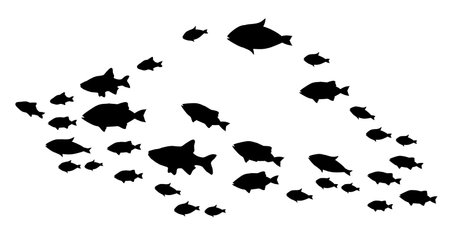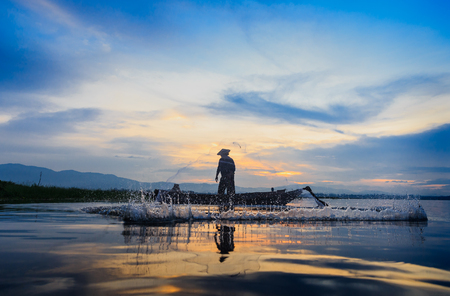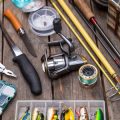1. Understanding Protected Fish Species in U.S. Waters
In the United States, both federal and state wildlife agencies work hard to protect certain fish species that are at risk due to overfishing, habitat loss, or other environmental pressures. These fish are often labeled as “protected,” meaning anglers must follow specific rules when encountering them, including mandatory catch and release.
Why Are Some Fish Protected?
Fish become protected for a few key reasons:
- Population Decline: Numbers have dropped dangerously low due to overharvesting or environmental issues.
- Habitat Loss: Pollution, damming, and urban development can destroy spawning areas.
- Endemic Species: Some fish are native to only specific regions and need extra care to survive.
Examples of Protected Fish in American Waters
The list of protected species varies by region, but here are some commonly recognized examples across the U.S.:
| Species | Region | Status | Main Reason for Protection |
|---|---|---|---|
| Lahontan Cutthroat Trout | Nevada, California | Federally Threatened | Habitat degradation, invasive species |
| Pallid Sturgeon | Missouri & Mississippi Rivers | Federally Endangered | Dams blocking migration routes |
| Shoal Bass | Southeastern U.S. | State Protected (varies) | Losing native range to hybridization with other bass species |
| Bull Trout | Pacific Northwest, Northern Rockies | Federally Threatened | Sensitive to water temperature and pollution |
The Role of Habitat in Protection Efforts
A big part of protecting fish is also protecting their habitats. Clean rivers, cold mountain streams, and undisturbed spawning grounds are critical for many species to thrive. When these environments are damaged or altered, fish populations suffer—so it’s not just about protecting the fish but also the places they live.
The Connection Between Anglers and Conservation
You play a key role in helping these species recover. By knowing which fish are protected and following proper catch-and-release methods (covered in upcoming sections), you help ensure future generations can enjoy healthy fisheries too. Responsible fishing isnt just good practice—its essential conservation.
A Quick Tip for Identifying Protected Fish
If youre unsure whether a fish is protected in your area, check your local Department of Fish and Wildlife website before your trip. Many states offer printable guides or mobile apps with pictures and regulations by species.
Together, we can keep our waters thriving while still enjoying the sport we love.
2. Why Catch and Release Matters
Catch and release fishing isnt just a feel-good practice—its a powerful tool for protecting our waters and the fish that call them home. Especially in the U.S., where many freshwater and saltwater species are threatened or endangered, releasing fish properly helps ensure healthy populations for future generations. Whether youre casting a line in the Great Lakes or fly-fishing in Montana, your actions directly impact aquatic ecosystems.
Protecting Threatened and Endangered Species
Some fish populations in American waters are declining due to overfishing, habitat loss, pollution, and climate change. For species that are listed as threatened or endangered under federal or state laws, catch and release is often required by law—but its also crucial from an ecological perspective. By returning these fish unharmed, anglers help maintain biodiversity and give these vulnerable populations a chance to recover.
How Catch and Release Supports Conservation
Practicing proper catch and release contributes to:
- Population Recovery: Released fish can reproduce and grow, helping restore their numbers.
- Ecosystem Balance: Every species plays a role in its environment. Removing too many fish disrupts this balance.
- Sustainable Fishing: Future generations will be able to enjoy fishing when we protect todays fish stocks.
Fish Species That Benefit from Catch and Release
| Species | Status | Common U.S. Regions |
|---|---|---|
| Atlantic Sturgeon | Endangered | East Coast rivers (e.g., Hudson River) |
| Bull Trout | Threatened | Pacific Northwest (e.g., Idaho, Montana) |
| Pallid Sturgeon | Endangered | Missouri and Mississippi Rivers |
| Smalltooth Sawfish | Endangered | Southeast U.S. coastal waters (e.g., Florida) |
The Angler’s Role in Conservation
You don’t need to be a scientist to help preserve America’s natural resources. Every time you choose to release a protected fish properly, you’re taking part in nationwide conservation efforts. It’s about more than just following regulations—it’s about respecting wildlife and keeping our fisheries thriving for years to come.

3. Essential Gear and Preparation
Having the right gear is key to successful catch and release, especially when targeting protected fish species in American waters. Using equipment that minimizes harm not only supports conservation efforts but also helps maintain healthy fish populations for future generations of anglers.
Preferred Tackle
When fishing with conservation in mind, its important to choose tackle that allows you to land fish quickly and safely. Lighter tackle may be fun, but it often leads to longer fight times, which can exhaust the fish. Use appropriately weighted rods, reels, and lines based on the species youre targeting to reduce stress on the fish.
Recommended Line Weights
| Fish Species | Recommended Line Weight (lb test) |
|---|---|
| Trout | 4–8 lb |
| Bass | 8–12 lb |
| Salmon | 10–20 lb |
| Snook or Redfish | 15–20 lb |
Barbless Hooks
Using barbless hooks or crimping the barbs on standard hooks is strongly recommended. Barbless hooks make it easier to release fish quickly and with minimal injury. They’re also safer for you in case of an accidental hook-up with yourself or others.
Appropriate Nets
The type of net you use matters more than many anglers realize. Rubber or silicone mesh nets are best because they reduce damage to the fishs protective slime coating and scales. Avoid nylon or knotted nets, which can cause unnecessary harm.
Net Comparison Table
| Net Type | Fish Safety Rating | Description |
|---|---|---|
| Rubber Mesh Net | Excellent | Smooth surface; gentle on fish skin and slime coat. |
| Silicone Net | Excellent | Durable and soft; reduces tangling and injuries. |
| Nylon Net (Knotted) | Poor | Abrasive; can damage fins and remove slime layer. |
| Nylon Net (Knotless) | Fair | Better than knotted but still harsher than rubber or silicone. |
Safe Handling Tools
A few simple tools can make a big difference in protecting the fish during catch and release:
- Pliers or hemostats: For quick hook removal.
- Lip grippers: Useful for holding larger fish without squeezing them too hard.
- Fish handling gloves: Help protect both your hands and the fishs skin.
- Keeper tools: Like floating nets or live wells for short-term holding if needed.
The better prepared you are with the right gear, the smoother your catch-and-release experience will be—for both you and the fish.
4. Proper Handling Techniques
When practicing catch and release, how you handle the fish can make a big difference in its chances of survival. Fish are sensitive creatures, and improper handling can cause serious injury or even death. Here are some easy-to-follow best practices to help you safely land, hold, and release protected fish in American waters.
Landing the Fish
Try to land the fish as quickly as possible to reduce stress and exhaustion. Use gear that matches the size of the fish youre targeting so you dont overplay it. A rubber or knotless landing net is ideal because it causes less damage to scales and slime coating.
Holding the Fish
Once landed, keep the fish in the water as much as possible. If you need to lift it for a photo or hook removal, wet your hands first to protect its slime layer — this helps prevent infections. Always support the fish horizontally with one hand under the belly and another near the tail. Avoid squeezing or putting fingers in the gills or eyes.
Time Out of Water
A good rule of thumb: if you cant hold your breath longer than the fish is out of water, its been too long. Try to limit air exposure to under 10 seconds whenever possible.
Recommended Air Exposure Times
| Fish Species | Max Time Out of Water |
|---|---|
| Bass (Largemouth/Smallmouth) | < 10 seconds |
| Trout (All Species) | < 5–7 seconds |
| Salmon & Steelhead | < 10 seconds |
| Pike & Muskie | < 15 seconds (if necessary) |
| Catsfish & Panfish | < 10 seconds |
The Release Process
If youre releasing the fish back into moving water like a river or stream, face it upstream so water flows through its gills naturally. Gently move it back and forth only if needed — many fish will swim off on their own when ready. In still water, hold the fish upright and give it time to recover before letting go.
Quick Tips for Safe Release:
- Avoid fishing in extreme temperatures — hot weather can stress fish more.
- If a fish is deeply hooked, cut the line close to the hook instead of trying to remove it.
- Never drag a fish onto dry ground or boat decks — keep it in the water as much as possible.
- If taking photos, have your camera ready ahead of time to minimize handling time.
The goal is always to give the fish the best chance at survival so future generations can enjoy fishing too.
5. Legal Considerations and Best Practices
When practicing catch and release for protected fish species in American waters, its important to follow all legal regulations and ethical guidelines. These rules not only help conserve fish populations but also ensure youre fishing responsibly and within the law.
Federal and State Regulations
Fishing laws can vary depending on where youre casting your line. While some regulations are set at the federal level, most rules—like size limits and seasonal restrictions—are determined by individual states. Its always best to check with local wildlife agencies before heading out.
Common Federal Guidelines
- Endangered Species Act: It’s illegal to harm or target endangered or threatened fish species.
- Magnuson-Stevens Fishery Conservation and Management Act: Oversees marine fisheries management in federal waters (3-200 miles offshore).
- Lacey Act: Prohibits transporting illegally caught fish across state lines.
State-Level Rules (Examples)
| State | Protected Species Examples | Special Regulations |
|---|---|---|
| Florida | Goliath Grouper, Sawfish | No harvest; must be released immediately |
| California | Steelhead Trout (certain rivers) | Certain zones require barbless hooks only |
| Texas | Paddlefish | Catching prohibited in most areas |
Respecting Size and Bag Limits
Each state sets size and bag limits to protect young fish and ensure breeding populations stay healthy. Even if youre releasing a fish, knowing these limits helps avoid unintentional harm.
Tips:
- Measure before removing from water: Use a floating ruler or measuring board.
- If undersized or oversized: Release immediately using proper handling techniques.
- Follow daily bag limits: Even catch-and-release can count toward your limit in some states.
Reporting Accidental Catches
If you accidentally catch a protected species, it’s important to report it. This data helps scientists track populations and improve conservation strategies.
- Take a quick photo (if safe): Helps with identification when reporting.
- Contact local wildlife agency: Many have hotlines or mobile apps for reporting catches.
- Avoid posting location publicly: Sharing exact spots online may encourage illegal targeting of protected species.
Ethical Fishing Behavior
Being an ethical angler means more than just following the law—it’s about doing whats best for the environment and fellow anglers too.
- Avoid overcrowded fishing areas: Protects habitat from overuse.
- Use circle hooks: They reduce deep hooking and make releases safer for the fish.
- Treat every fish with care: Whether it’s protected or not, handle gently and return quickly to the water.
The more we understand and respect the legal and ethical aspects of catch and release, the better chance we have at preserving America’s diverse fish populations for future generations.


